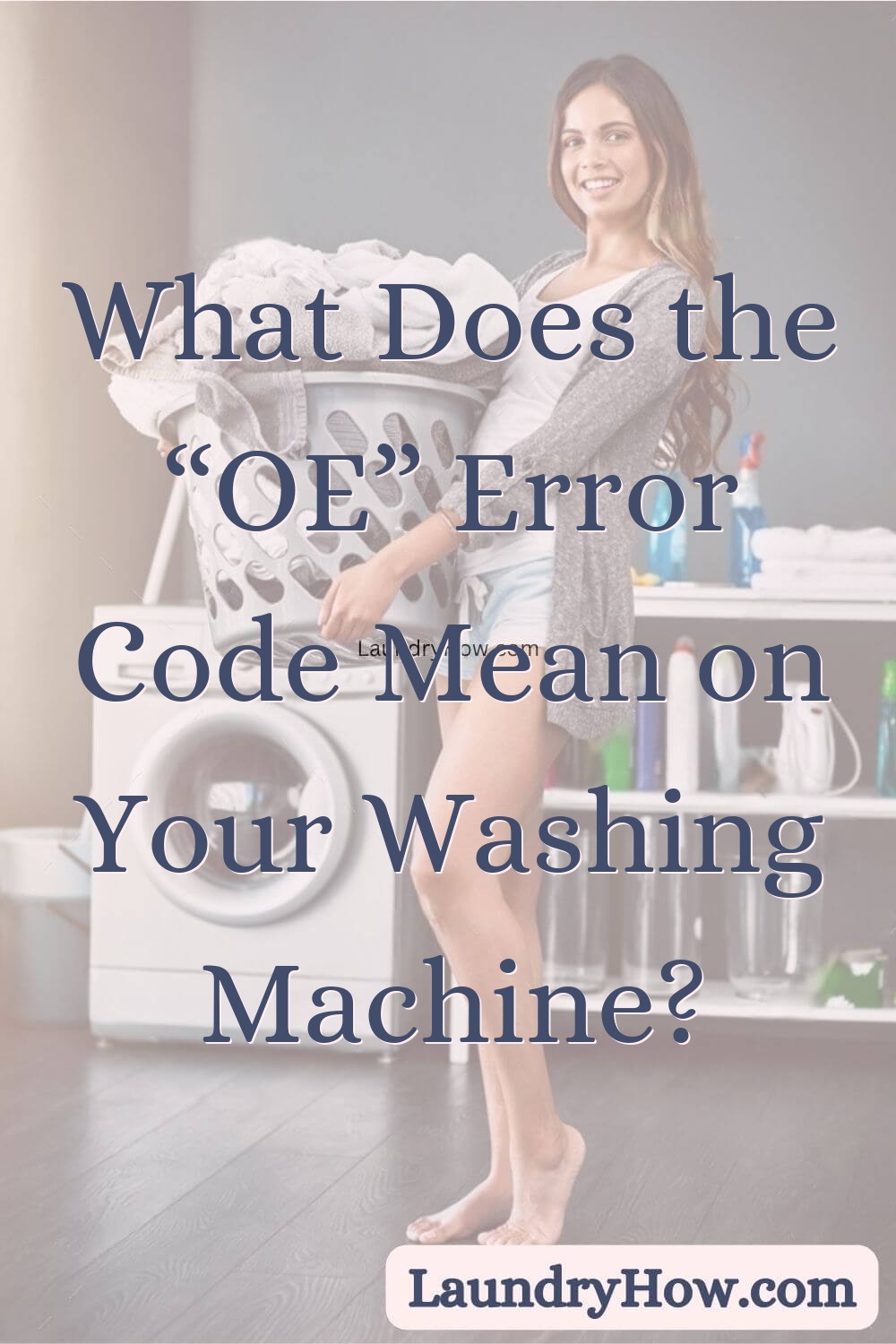You throw a load of laundry into your washing machine, add detergent, turn it on, and walk away. When you come back later, you find your clothes sitting in water and an “OE” error code flashing on your display. Uh oh. Now what does that mean and what should you do? Don’t worry, the “OE” error is common and can often be fixed easily by checking a few things on your machine.
What the OE Code Stands For
The “OE” code stands for “draining error” on many washing machine models. Essentially, it means there was a problem with the drain system that prevents your washer from draining the water out properly after the wash cycle finishes.
This could be caused by a few different issues:
- A clogged or kinked drain hose
- A clogged drain filter or pump filter
- A problem with the drain pump
- An electrical issue with the drain system controls
Knowing exactly what the OE code means for your specific model of washer is the first step towards diagnosing and fixing the issue.
First Step – Try Powering Off and Back On
The first thing you should try is unplugging your washing machine, waiting a minute, and plugging it back in. Sometimes a basic power reset like this will clear minor control glitches that are preventing proper draining and operation. Fingers crossed that works!
If not, don’t worry, just move on to the next steps below:
Check Your Drain Hose
The most common cause of OE drain issues is a clogged or kinked drain hose. This is the hose that runs from the back of your machine to a standpipe, laundry sink, or drain.<h4>Things to Check:</h4>
- Make sure the drain hose is pushed firmly and securely onto the drain outlet on the back of the machine. A loose connection can leak and lead to issues.
- Examine along the entire length of the hose and straighten out any kinks, clogs, or tight bends. Drain hoses should be as straight as possible from machine to drain for optimum flow.
- Disconnect the hose from your washer and inspect the hose as well as the outlet on the machine. Clean out any possible lint, coins, etc with a toothbrush or pipe cleaner. Reattach securely.
Once your drain hose is straight and clear, try rebooting your washer and running a drain test or new cycle to see if proper drainage was restored.
Check and Clean Drain Filter
Most washers have a small filter along the drainage system designed to catch stray coins, buttons, lint and other objects that may clog pipes. If this drain filter gets too clogged, it can back up drainage flow and cause an OE error.
To check this filter:
- Locate the small round or rectangular drain filter along the bottom of your machine or access panel.
- Place a small pan or towel beneath it to catch water.
- Twist, unscrew or otherwise remove the filter. Flush and clean it out completely under running water, removing all debris trapped inside.
- Securely replace the cleaned filter back into your washing machine.
With a cleaned drain filter, try restarting your washer and checking for successful drainage.
Ensure Pump Filter is Clean
Some washers have an additional small filter on the internal drain pump mechanism itself that needs periodic cleaning as well. Access to this pump filter varies by machine model:
- On some it’s located behind a small access door along the front bottom panel.
- On other models you may have to remove a panel on the lower front of the machine to access the pump. Consult your appliance manual for details.
Carefully clean out any debris you find inside the pump filter housing. Once filter is clear and securely replaced, power machine back on and test operation on a new cycle.
Check Electrical Components
If the above steps did not restore normal drainage operation, the OE code may be caused faulty drainage system electrical controls or a malfunctioning drain pump motor. This would require professional diagnosis and repair:
- A motor control board regulates the pump and valves. If this electrical component fails, error codes can display.
- The drain pump uses an electric motor to physically push water out. Problems with the pump motor itself can halt proper drainage.
In these cases, you will need to schedule appliance repair service to have the electrical system tested and components replaced as needed.
As you can see, the “OE” code can stem from a few common issues – but trying some simple troubleshooting steps yourself can often resolve things quickly without the need for service calls. Don’t let that OE code scare you off…give the fixes above a shot and there’s a good chance you can get your washer happily draining and washing again!<h2>References:</h2>
Maytag Appliances. (2021, July 25). What does OE error code mean? Maytag Service. Retrieved from https://www.maytagservicerepair.com/what-does-oe-error-code-mean
LG Appliances. (2021, October 30). LG Washer Error Code OE Causes and How to Fix It. LG Service. Retrieved from https://www.lg-service-centre.com/lg-washer-error-code-oe/
Crosley Appliances. (2021, November 1). “OE” Error Code Troubleshooting. Technical Education Data Sheets. Retrieved from https://crosleyappliances.com/oe-error-code-troubleshooting/
Acme How To. (2021, January 22). Washing Machine OE Error (Drain Error) Causes & Fixes. Retrieved from https://www.acmehowto.com/appliance-repair/washing-machine-oe-error/

Laura has had an enthusiasm for laundry ever since she was a teenager experimenting with wash cycles. She went on study textile science in college before working in product testing.
Soon, Laura found friends and family constantly asking her laundry advice, realizing she had become an unofficial laundry guru. The questions kept coming in, so Laura decided to start sharing laundry tips online to help more people. The enthusiastic response led her start the blog “Laundry How”.
Now in her late thirties, Laura uses Laundry How to tackle all kinds of laundry topics – stains, fabric care, detergents, and more. She provides advice from both her studies and experience testing techniques out firsthand. Laura continues to grow an engaged community of laundry learners, feeling fulfilled empowering people to make laundry an easy, confidence-building ritual rather than a dreaded chore.
